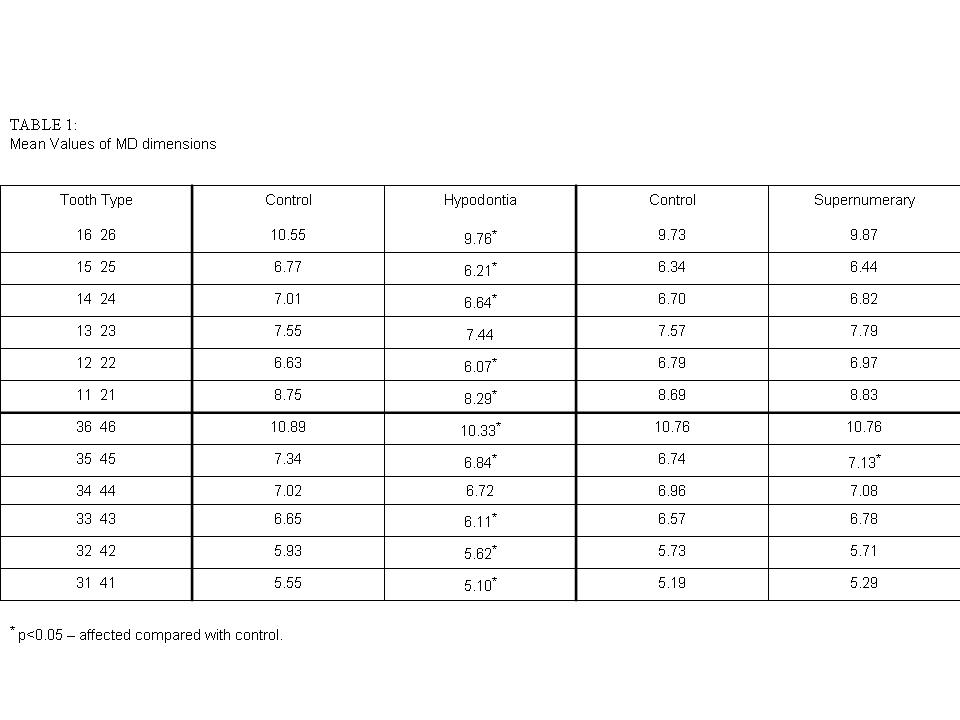ABSTRACT: 0688
Tooth size patterns in patients with hypodontia and supernumerary teeth
| A.H. BROOK1, R.C. GRIFFIN1, R.N. SMITH1, G.C. TOWNSEND2, G. KAUR1, G.R. DAVIS3, and J.M. FEARNE3, 1International Collaborating Centre in Oro-facial Genetics and Development, School of Dentistry, University of Liverpool, United Kingdom, 2University of Liverpool, UK and the University of Adelaide, Australia, United Kingdom, 3Centre for Oral Growth & Development, Queen Mary's School of Medicine & Dentistry, London, United Kingdom | |
Click on images to view full size. Anomalies of tooth number may not be isolated conditions but may have wider associations in the development of the dentition including tooth size. OBJECTIVES: To examine links between hypodontia, supernumerary teeth and crown size, considering the effect on the development of the whole dentition and so increase understanding of the aetiology of the conditions. METHODS: The patients, who were all of European ancestry, included 60 young adults (30 males and 30 females) with hypodontia and 60 age and sex matched controls together with 60 young adults (39 males and 21 females) with supernumerary teeth and 60 age and sex matched controls. Hand measurements of mesiodistal and buccolingual dimensions were made of the teeth on study models using Mitutoyo electronic callipers. The mean value of two measurements was used and intra-operator and inter-operator reproducibility determined. RESULTS: Patients with hypodontia had smaller teeth than the control group and this difference was statistically significant (p<0.05) for all teeth except the MD dimensions of 13, 23, 24 and 44 (Table 1). The difference in size was greatest for the BL dimensions in hypodontia patients. Further, the greater the number of missing teeth the smaller the tooth size. The hypodontia patients also showed higher variability in tooth dimensions than the control group. Patients with supernumerary teeth had larger teeth than the controls, with the greatest differences in the MD dimensions. In hypodontia and supernumerary patients the differences in tooth size were generalised throughout the dentition (Table 1). CONCLUSION: In anomalies of tooth number the size of teeth is also involved. In patients with hypodontia and supernumerary teeth the crown size of the whole dentition is affected. These findings are compatible with a multifactorial aetiology of the conditions. | |
| Seq #90 - Dentin & Dentin Proteins 2:00 PM-3:15 PM, Thursday, July 3, 2008 Metro Toronto Convention Centre Exhibit Hall D-E | |
©Copyright 2008 American Association for Dental Research. All Rights Reserved.
